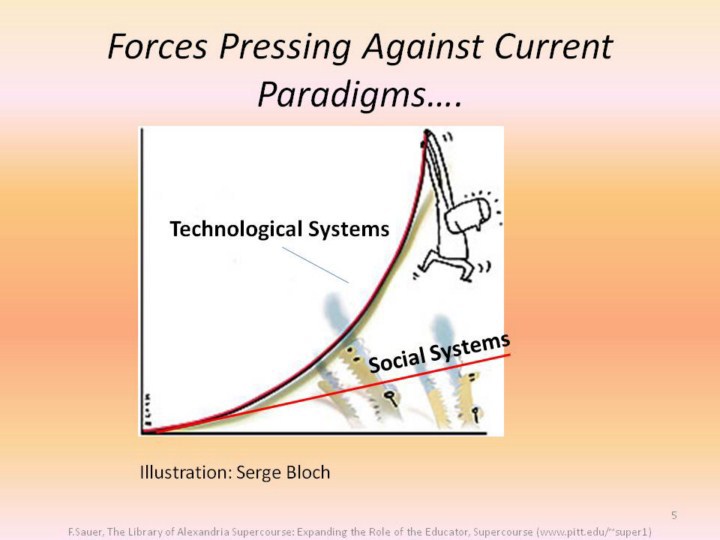| front |1 |2 |3 |4 |5 |6 |7 |8 |9 |10 |11 |12 |13 |14 |15 |16 |17 |review |
 |
Now one of the emerging challenges in our complex and chaotic world is to reconcile the explosion of knowledge with the capacity of the individual and the community to assimilate and process this knowledge as no individual brain can process all the knowledge available alone. A growing gap manifests the cognitive dissonance between technological systems and social systems. This gap is basically about the ethic required to apply the available findings of sciences. Developing countries may have now a unique opportunity to up front better integrate technological and social systems.
In the book “The Laws of Disruption”, Downes writes “According to the Law of Disruption, technology changes exponentially, but social, economic and legal systems change incrementally… as human beings reorder their lives to adjust to new realities, the second order effects of innovation are both more dramatic and more systemic” (Downes, 17). This is illustrated here.
Here we see illustrated the widening gap between technology and social, economic, and/or legal systems. The challenge is to design the policies that will regulate the operation of the New Paradigm of co-creation for the educator-student relationship.
This New Paradigm of the educator as a catalyst represents a significant shift; this shift requires a major transformation in the thinking of many educators and a transformation of the policies that will support their new role for the educator to help the student to navigate within our complex interconnected system with multiple feedback loops and leverage points that neutralize the predictive value of any lineal thinking process. In addition the key challenge is the ethical balance between the fulfillment of the needs of the individual and his/her community. |